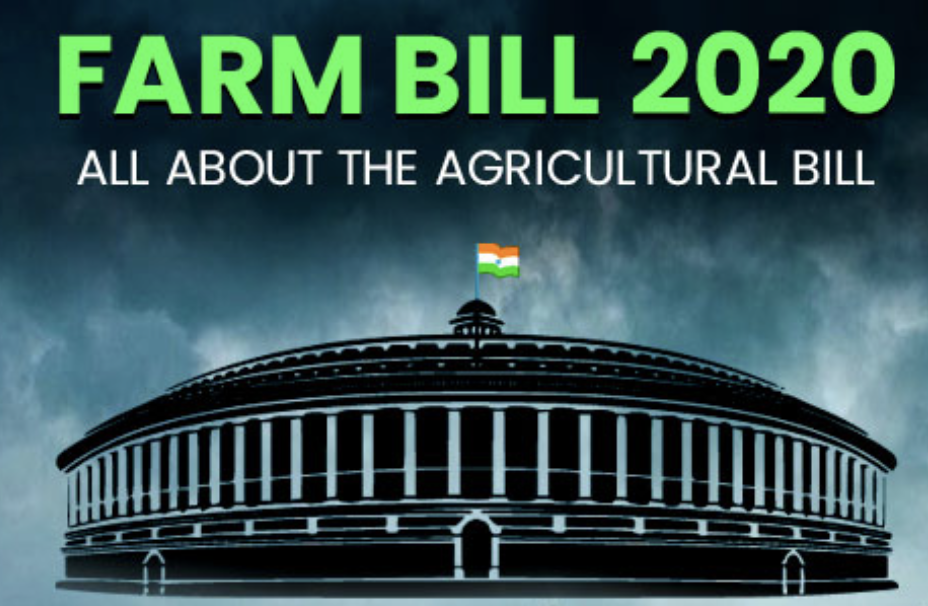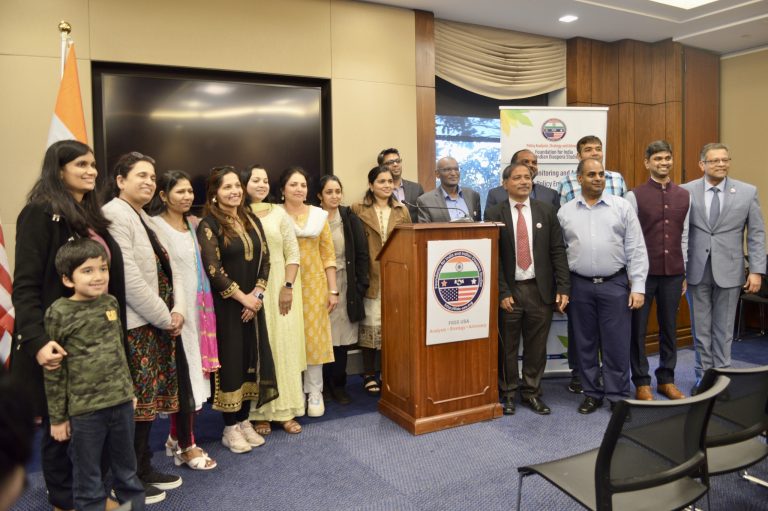
In the last six years, India, under the leadership of Prime Minister Narendra Modi, has committed to strengthening the Indian economy for the prosperity of its citizens. In achieving this goal, the current Indian government has initiated major reforms in areas such as business, taxation, the environment, and, most recently, agriculture. Unfortunately, there has been a recent campaign of misinformation about the bills, about ongoing protests, and finally about India’s handling of those protests.
We observe an ongoing campaign against Farm reform bills passed by India’s parliament in Sept’20. We also observe that this campaign and protests would prevent India from reforming the agricultural sector and its benefits the global economy.
As the Policy Research Group of Foundation for India and Indian Diaspora Studies, a policy research and analysis institute, we would like to present following facts on the bills and the ongoing protests for your consideration:
DETAILS ON FARM BILLS
- The three farm bills are based on the recommendations of two five-year planning commissions (from 2007 to 2012 and from 2012 to 2017) and demands by various farmers organizations and political parties over a decade. Based on the recommendations of these five-year planning commissions, on September 17th, 2020, India’s current Parliament passed three farm-related bills (aka farmers bill) as per the Indian constitution. The bills are as follows:
- (i) The Farmers’ Produce Trade and Commerce Act – this act, in effect, removes previous restrictions that prevented farmers from selling their produce beyond their local markets (called Mandis).
- (ii) The Farmers Agreement on Price Assurance and Farm Services – this act, in effect, allows farmers to enter into contract farming with corporations while also protecting them from litigation and potential takeover of their farms by these same corporations.
- (iii) The Essential Commodities Amendment – this act, in effect, which is aimed at deregulating commodities such as cereals, pulses, oilseeds, edible oils, onion and potatoes from the ‘essential list’ (restricted under extraordinary circumstances such as war and famine) .
- Understand the background of farm bills in Context with the US Farm Bill: The United State’ Farm Bill (AAA) was first introduced post great depression in 1933 to avoid overproduction of farm produce and had restricted farmers to what and how much to produce. In 1996, the first major structural change was made to the farm bill when Congress decided farm incomes should be determined by free market forces and stopped subsidizing farmland and purchasing extra grain. India’s previous farm laws were originally introduced by the colonial British rulers of India in 1886 to ensure the regular supply of reasonably priced pure cotton for the benefit of its textile mills back in England. The 1960s version, based on India’s then scarcity, created a local market system in which farmers were restricted to selling their goods through this local market or ‘mandi’. Unlike every five-year update to the US farm bill done by the US congress, India’s farm act was not updated to the changed economy and situation of India. Like the 1996 reform of the US farm bill, this is the reform towards free-market economy that will benefit the farmers and the economy.
- Major reforms of the previous outdated laws were repeatedly called for by farmer’s unions and opposition parties: Even though the system guaranteed a ‘minimum support price (MSP)’, the system was not able to purchase all the produce, which would greatly impact less-influential poor farmers. For this reason, both the Bharatiya Kisan Union (BKU, one of the largest and protesting organization), in its 2019 ‘Farmers Manifesto for Freedom’, as well as one of the main opposition parties in India, the Indian National Congress, called for the outdated ‘Agriculture Produce Market Committees’ (APMC) Act to be abolished [Ref 9, section 7]. As BKU had called [Ref 5], “Open and competitive markets based on recognition and respect for property rights and the freedom to trade are prerequisites for any growing economy. Yet, our farmers are restricted in terms of where, how and at what price they can sell their produce. All these restrictions are forms of violation of their property rights.” Due to political considerations, the same BKU is now protesting against the same reforms they once proposed.
- These bills have been welcomed and appreciated by economists and farmers. In fact, International Monetary Fund (IMF) Chief Economist Gita Gopinath, said,” the three farm laws introduced by the Government of India have the potential to increase farmers’ income”.[Ref 3]
- Farmers from 26 out of 29 states and 9 Union Territories welcome [Ref 4] and support the bill. Only Farmers from three states – Punjab, Haryana and Uttar Pradesh – have expressed reservations where the APMC and Mandi system is established.
- Why protest? These necessary reforms clearly hurt the interests of the main beneficiaries of the mandi system by removing their shackles on the poor farmer. As noted in an article (Nov 4, 2020) in BusinessInsider [Ref 6], “These three bills may liberate farmers from the clutches of middlemen, also known as Arhtiyas. Lakhs of commission agents in mandis of Punjab and Haryana, both the leading farm producer states, will stand to lose their control over farmers and in turn huge revenue.” The APMC / mandi system is predominantly established only in a few states including Punjab, and Haryana. These commission agents developed relations with farmers and established a money lending business. As their interests are impacted, they are also said to be fueling the protests. As the Business Insider noted, the local state government of Punjab ruled by the opposing party would also lose revenue collected as fees from APMC trades and hence their political base is part of the protest. The farmers from these states are getting misinformed about the impact of the bill with rumors like they may lose land to corporations, even though the farm bill explicitly prohibits such take over.
- Over the past four months (October 2020 to January 2021) since the protests started, the Government of India has held meetings with leaders of more than 30 farmers’ associations on 11 different occasions. During the discussions, the government expressed readiness to address the key concerns by agreeing to continue the mandi or local market system, continuing to ensure the minimum selling price (MSP), and further promising support from India’s legal system to prohibit any takeover of farmers’ lands. However, the leaders, seemingly motivated by personal gains and political ambitions, have continually refused to negotiate in good faith, i.e. an inconsistent or non-existent stance on issues, demanding complete repeal of the laws without compromise, and a list of ever-increasing demands.
- As the negotiations failed to yield results, the Supreme Court of India appointed a panel to resolve the disagreement, however the protesting farm leaders refused to participate in the discussions [Ref 7].
- In Jan 20, in an effort to resolve the conflict, the Government of India also announced its readiness to pause the implementation of the farm law for an 18-month period to facilitate discussions and resolutions. However, leaders of the protesting farmers have refused to participate in good faith to further negotiate or address any concerns/short-comings. [Ref 8]
DETAILS ON PROTESTS
- Though the protesters were given permission by the government to hold a peaceful protest on India’s Republic Day January 26, 2021, the rally quickly turned violent, resulting in massive vandalism to public property and significant injuries to 395 security personnel. Like the recent events at the US Capitol on January 6, 2021, the protesters caused destruction to a symbol of the country’s history, India’s historic Red Fort built in the 15th century. However, the protesters in India went even beyond that by burning buses, destroying equipment, and using swords and other weapons to assault and harm the public and the police.
We present the above information to allow you to make an informed decision with regards to the recent occurrences in an important democratic ally. It is important that the strong democracies of the world – namely the United States and India – stand united, not only against external threats and terrorists, but also against anti-national threats found within each of our borders.
If you have further questions or clarifications, please contact us at info@fiids-usa.org
The Policy Research Group,
Foundation for India and Indian Diaspora Studies (FIIDS),
An Indo-American Institute for Policy research, Analysis and Awareness
References:
- Press Release summarizing the bills https://pib.gov.in/PressReleaseIframePage.aspx?PRID=1654007
- FAQ on Farmers https://eoi.gov.in/havana/?pdf12027?000
- IMF Geeta Gopinath on Farms Bill https://www.indiatoday.in/business/story/india-s-agriculture-laws-have-potential-to-increase-farm-income-says-gita-gopinath-1763291-2021-01-27
- Many Farm leaders welcome the reform bill https://economictimes.indiatimes.com/news/economy/agriculture/many-farm-leaders-welcome-agricultural-reforms-despite-some-resistance-in-punjab-and-haryana/articleshow/78219043.cms?from=mdr
- Bharatiya Kissan Morcha asking for repealing APMC in 2019’s Freedom Manifesto https://indianexpress.com/article/india/liberalising-agriculture-farmers-manifesto-for-freedom-5646329/
- Why are the protests? https://www.businesstoday.in/current/economy-politics/what-are-farm-bills-who-are-opposing-and-why—an-explainer/story/416467.html
- Farm Leaders refused to discuss with the supreme court appointed panel mitigation committee https://www.outlookindia.com/website/story/india-news-farmer-unions-refuse-to-participate-in-meetings-of-court-appointed-committee/371273
- The government offered to pause the implementation of the law for 18months https://timesofindia.indiatimes.com/india/govt-ready-to-suspend-implementation-of-farm-laws-for-18-months-next-meeting-on-january-22/articleshow/80369144.cms
- Indian National Congress manifesto: https://manifesto.inc.in/pdf/english.pdf






